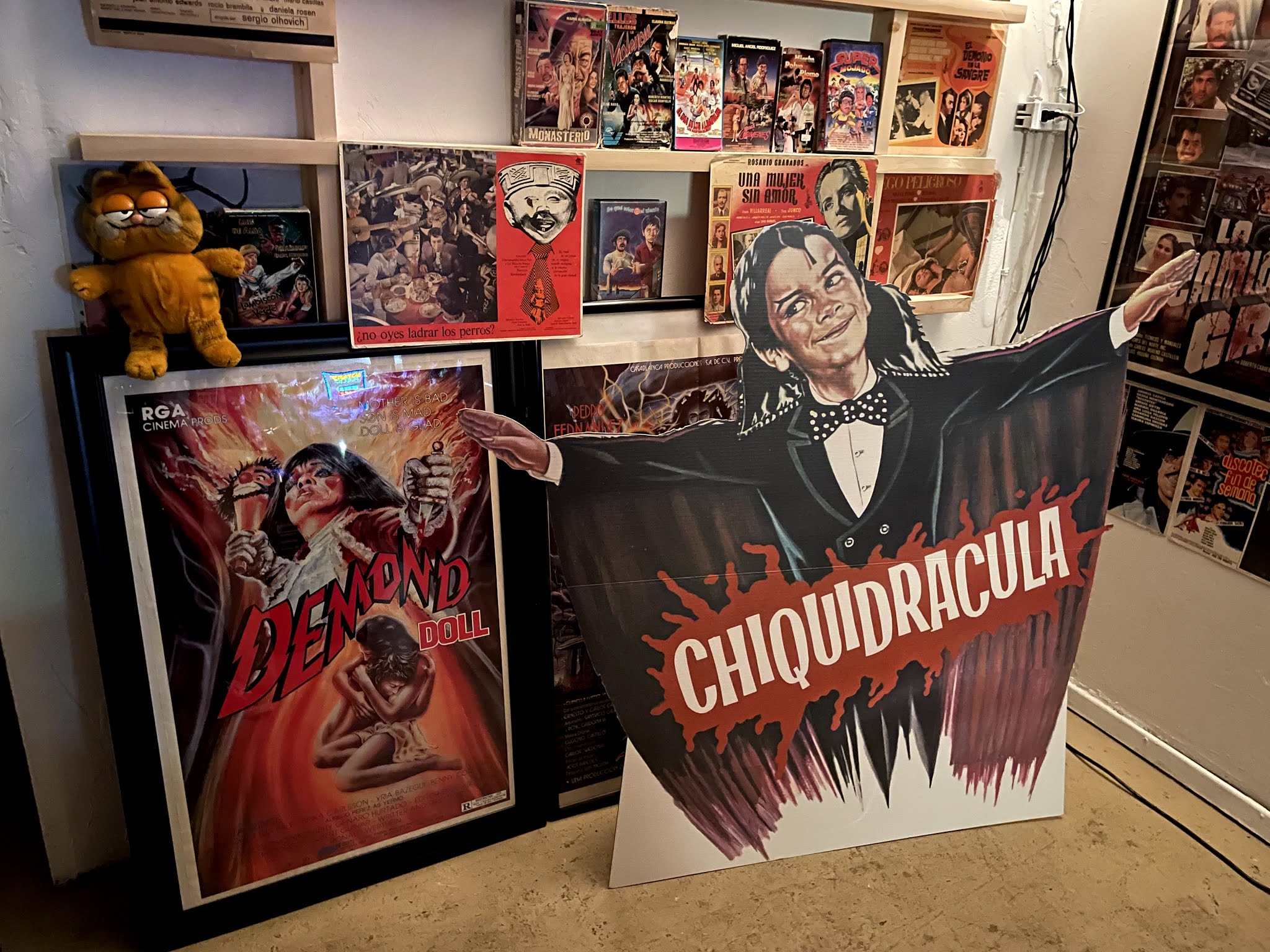[dropcap size=big]L[/dropcap]uchadores vs. La Llorona and “Sexycomedias,” welcome to the world of Mexican cult cinema, which, thanks to Armando Hernandez of Trash-Mex, is up for full display at his exhibit in Boyle Heights. His show “Recuerdos De Cine Mexicano De Culto” is a collection of years of rare, vintage Mexican film memorabilia. It is currently free and open to the public at Re/Arte Centro Literario until September 18th.
In 1954, the Cuban-born and Mexican-based film director René Cardona approached famed wrestler El Santo about starring in films based on his successful comic book series. Santo, El Enmascarado de Plata, turned down the offer. René simply found another masked luchador (Medico Asesino) and filmed El Enmascarado de Plata, an instant success.
They were unknowingly kicking into high gear the Mexican wave of low-budget, B-movie cinema that would eventually evolve and become a cult favorite among movie nerds. However, Horror and Sci-Fi Mexican movies had been around since 1935 with films like Los Muertos Hablan and 1936’s El Baul Macabro, which featured some of the first gore and unsettling imagery ever presented to Mexican audiences.
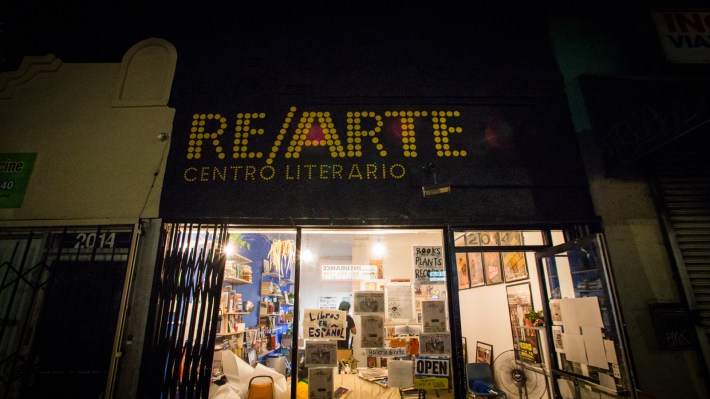
Those films relied more on melodrama than the high octane, in-your-face-swift chingadazo de kung-fu El Santo would eventually dish out on pervasive vampiros, momias, and even La Llorona. While the 50s and 60s relished in Sci-Fi and Secret Agent plots, the 70s and 80s of Mexican cinema started adapting more to the realities of a violent society. “I feel once the 1970s came, things got more intense and serious. There were movies about living in poverty, turning to crime, and some were about crossing over the border for a better life….” says Hernández.
Not to say that it was all blood and violence because you also had your comedy genre known as the Sexycomedia or Peliculas Ficheras, which borrowed heavily from Italian Erotic Comedies. The plots usually involve blue-collar workers or out-of-work scoundrels trying to hook up with busty barmaids, local homemakers, or nightclub dancers. Almost always unsuccessful and in hilarious situations.

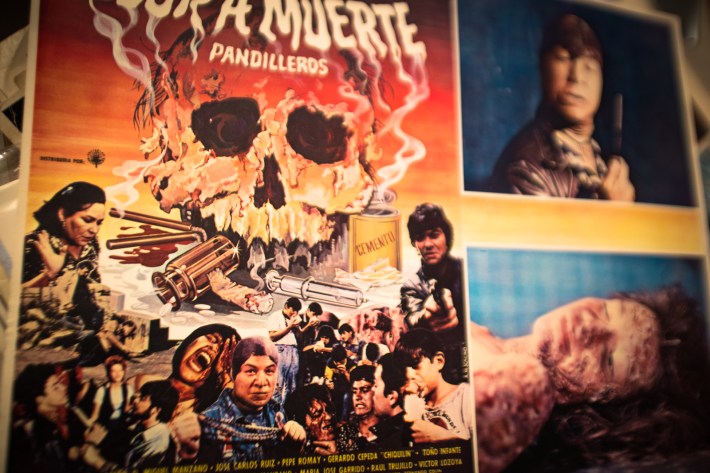
While these productions were always low-budget and started out with unknown or second-pick actors, a select few would become top billing stars with careers for generations and a name-brand following which allowed them to start producing their own films. Mario and Fernando Almada, Valentin Trujillo, Jorge Reynoso and Rosa Gloria Chagoyán come to mind.
“They were all definitely anti-heroes. If it’s a narco-crime movie, the guys were always involved in bad stuff. Even when they seemed kind-hearted, they weren’t always doing good,” says Hernandez as we discuss the shift from the early heroes of Mexican cinema. They were always tall, handsome gentleman charros to the grizzled, tortured souls who were neither good nor evil from the 70s and onward. “You see them giving money to their family or whatever. Then next thing you know, they’re out smuggling 100 kilos of cocaine and gunning down people. Nothing good comes about from that at all.”
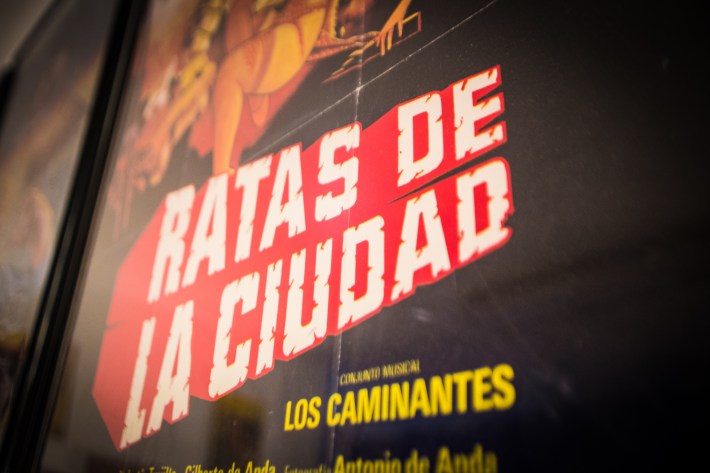
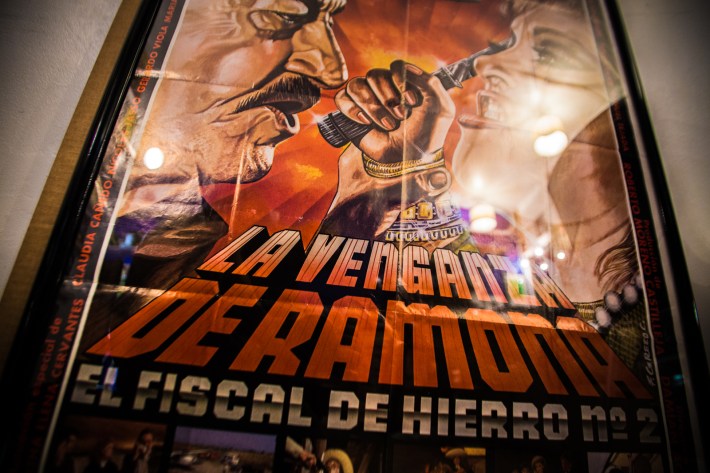
Hernandez has been an avid film collector and blogger for over 11 years based on his childhood memories. “You know, growing up, you watch these movies with your parents. One day I remembered La Banda Del Carro Rojo featuring Los Tigres Del Norte and just felt like watching it, so I looked it up and started buying.”
With his vast collection of VHS movies, posters, and lobby cards, Hernandez has spent countless hours seeking films, writing reviews, and even contacting some of the actors, producers, and directors of that bygone era. “They’re a tight group. That whole movie industry is like a small bubble. They only deal with each other and don’t really like outsiders asking questions.” Hernandez teamed up with Re/Arte Centro Literario, a literary center, and a bookshop in the heart of Boyle Heights for a weeklong exhibition.
In this exhibit, you’ll be able to see some of the amazing artwork depicted on the posters. Everything from gun-toting anti-heroes to demonic dolls and tricked out ‘mamalonas’ smashing through police cruisers to deliver their latest stash.
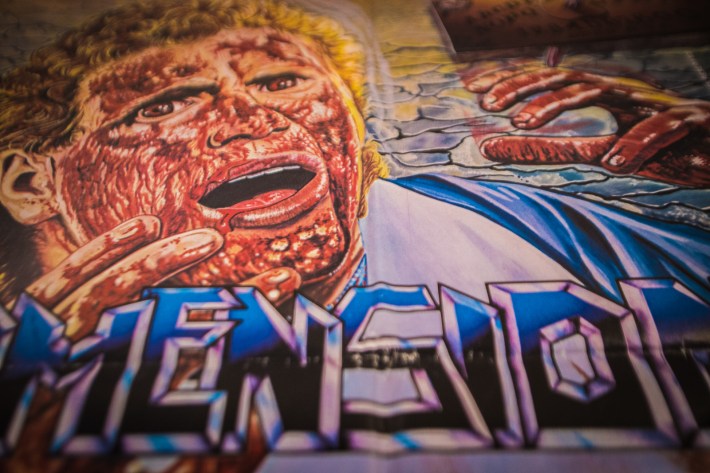
When I ask Hernandez which movie he would recommend to those interested, he doesn’t disappoint.
“Ratas De La Ciudad, for sure.”
“That movie deals with so many issues that Mexico was facing back then, and even more so now. It deals with poverty, young kids getting into drugs and joining gangs, and also police corruption. That movie was a huge success in Mexico and the USA, and it’s also one of Valentin Trujillo’s best movies. That movie is filled with a great story and plenty of action that’ll appeal to anyone.”
“Recuerdos de Cine Mexicano De Culto” will run from September 11th to the 18th. Entrance is free to the public.
Address: 2014 1/2 E Cesar E. Chavez Ave. Los Angeles, CA 90033
